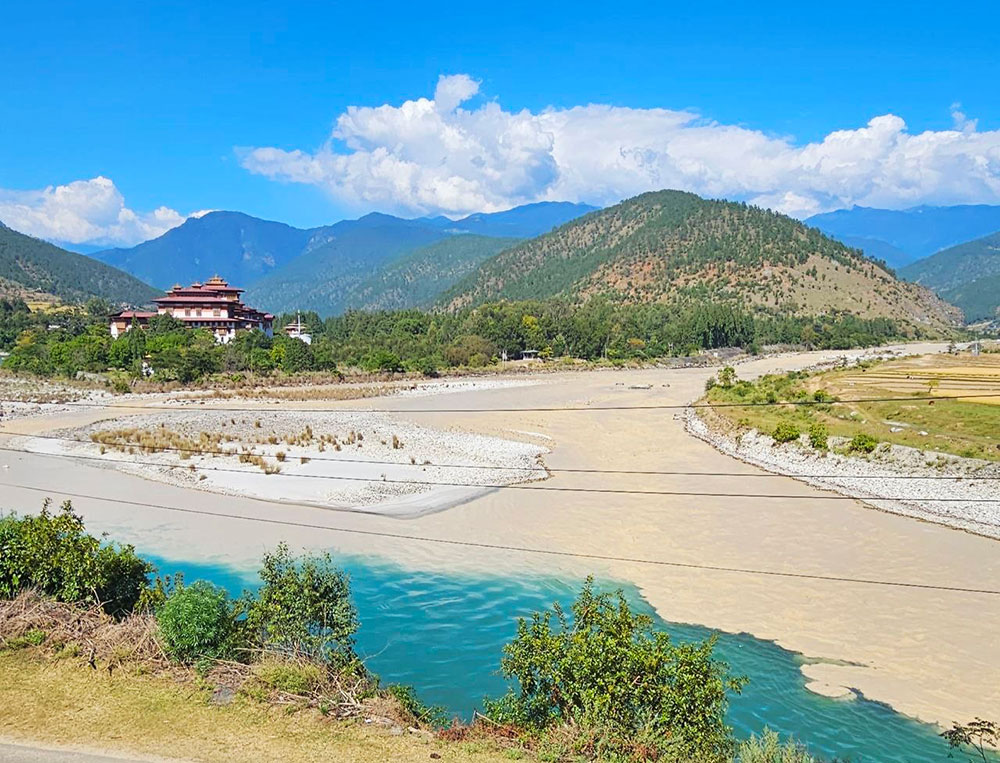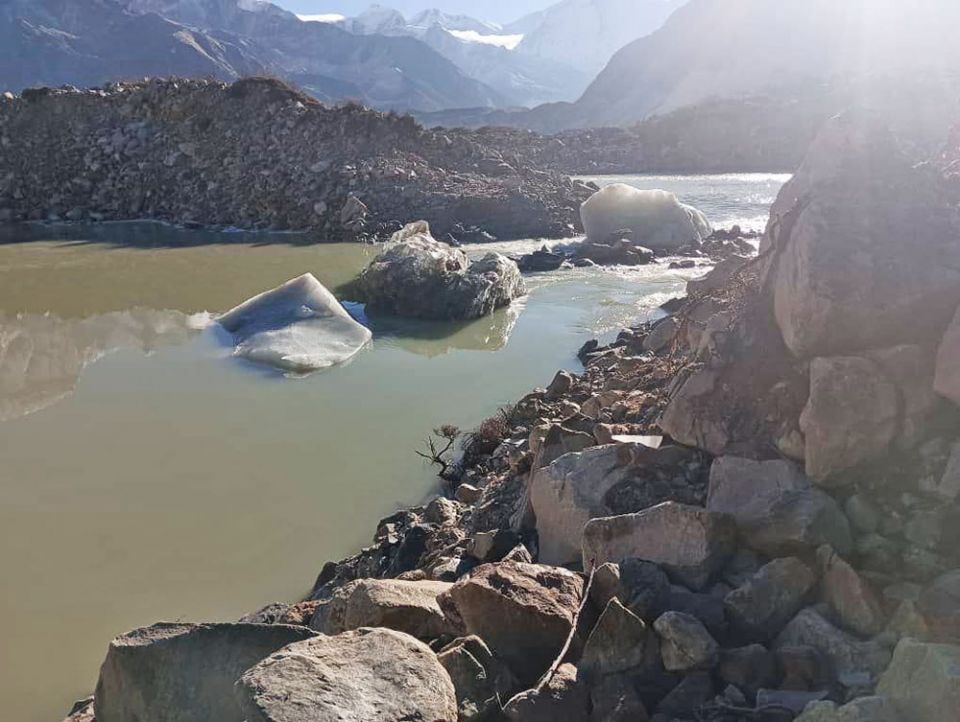
Residents along Phochhu were cautioned to be alert as Lake Thorthomi in Lunana burst on October 30 evening.
The National Centre for Hydrology and Meteorology reported an increase in water level at Thanza Flood Monitoring Station at 7.41pm on October 30 from Thanza Flood Warning Station. Thorthoromi Lake flooded at 7.20pm.
However, the residents woke up yesterday to witness a subsided Phochhu.
Following the GLOF incident, a three-men expert team from the National Centre for Hydrology and Meteorology (NCHM) headed by Glaciologists Karma Toeb and Phuntsho Tshering, and EWS Engineer Sangay Tenzin departed for Lunana to assess the risks associated with Thorthormi Lake yesterday.
The team will be conducting a drone survey of the area.

The expert team will conduct a drone survey of the area
NCHM Director Karma Dupchu said that the technical team will assess the situation and identify the cause of the outbursts. “At this moment, the water level is back to normal.”
However, he said that the communities living downstream are vulnerable, and have to be watchful and remain alert.
He said that although the site verification team had observed glacier displacement on moraine walls of subsidiary lakes and outlets, likely cause of the displacement and outbursts will be known after the completion of the assessment by the technical team.
All four lakes in Lunana flow into Phochhu. So, any flood that occurs from four lakes in Lunana will cause Phochhu to flood.
Punakha disaster management focal person, Sonam Phuntsho, said that residents have been asked to remain vigilant and that the dzongkhag is monitoring the situation.
On October 7, 1994, a partial outburst of a glacial lake in the Lunana (Lugge Lake) released approximately 18 million cubic metres of water, resulting in significant downstream damages.
It claimed 20 lives, destroyed pasture and agricultural land, and partially destroyed the Punakha Dzong.
As per NCHM 2019 update, Bhutan has 17 potentially dangerous lakes. Of that, 11 are in Punatsangchhu river basin; nine are in Phochhu basin and two are in Mochhu.












